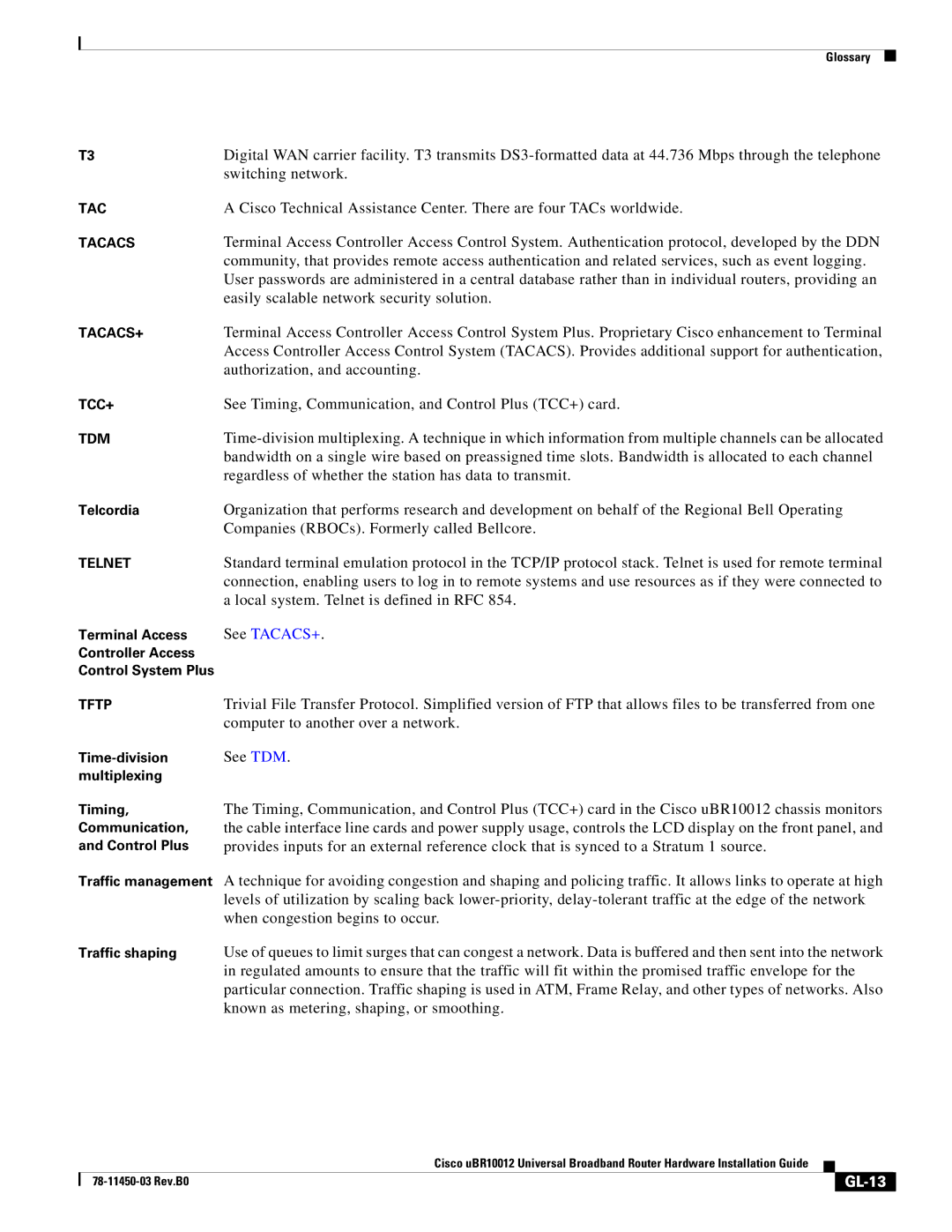Glossary
T3 | Digital WAN carrier facility. T3 transmits |
| switching network. |
TAC | A Cisco Technical Assistance Center. There are four TACs worldwide. |
TACACS | Terminal Access Controller Access Control System. Authentication protocol, developed by the DDN |
| community, that provides remote access authentication and related services, such as event logging. |
| User passwords are administered in a central database rather than in individual routers, providing an |
| easily scalable network security solution. |
TACACS+ | Terminal Access Controller Access Control System Plus. Proprietary Cisco enhancement to Terminal |
| Access Controller Access Control System (TACACS). Provides additional support for authentication, |
| authorization, and accounting. |
TCC+
TDM
See Timing, Communication, and Control Plus (TCC+) card.
Telcordia
TELNET
Organization that performs research and development on behalf of the Regional Bell Operating Companies (RBOCs). Formerly called Bellcore.
Standard terminal emulation protocol in the TCP/IP protocol stack. Telnet is used for remote terminal connection, enabling users to log in to remote systems and use resources as if they were connected to a local system. Telnet is defined in RFC 854.
Terminal Access
Controller Access
Control System Plus
TFTP
Timing,
Communication,
and Control Plus
Traffic management
Traffic shaping
See TACACS+.
Trivial File Transfer Protocol. Simplified version of FTP that allows files to be transferred from one computer to another over a network.
See TDM.
The Timing, Communication, and Control Plus (TCC+) card in the Cisco uBR10012 chassis monitors the cable interface line cards and power supply usage, controls the LCD display on the front panel, and provides inputs for an external reference clock that is synced to a Stratum 1 source.
A technique for avoiding congestion and shaping and policing traffic. It allows links to operate at high levels of utilization by scaling back
Use of queues to limit surges that can congest a network. Data is buffered and then sent into the network in regulated amounts to ensure that the traffic will fit within the promised traffic envelope for the particular connection. Traffic shaping is used in ATM, Frame Relay, and other types of networks. Also known as metering, shaping, or smoothing.
|
| Cisco uBR10012 Universal Broadband Router Hardware Installation Guide |
|
|
|
|
|
| |||
|
|
|
|
| |
|
|
|
|
